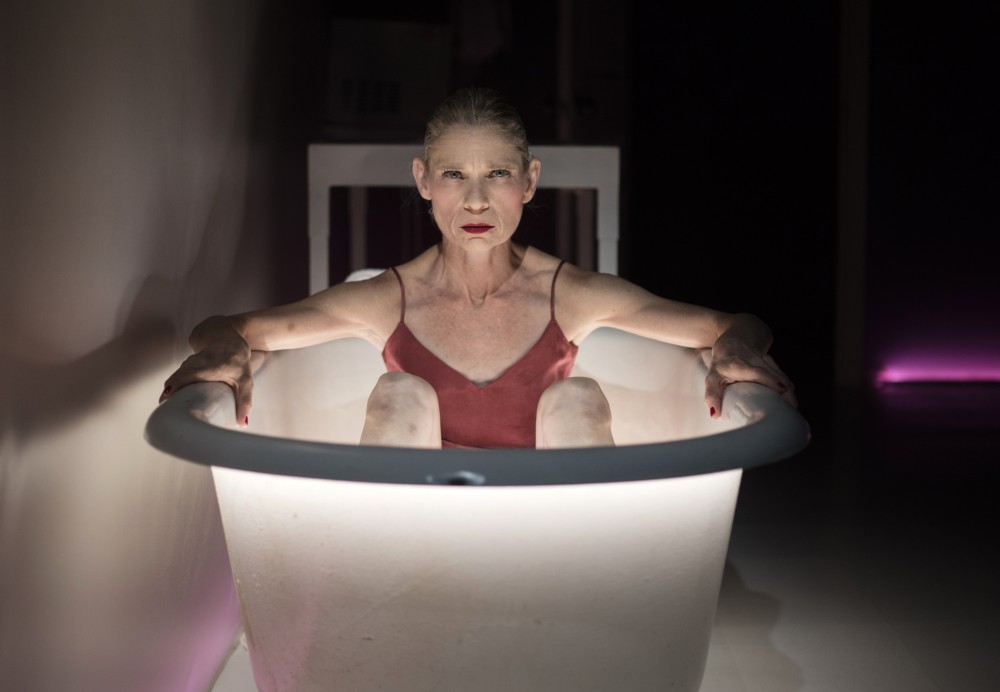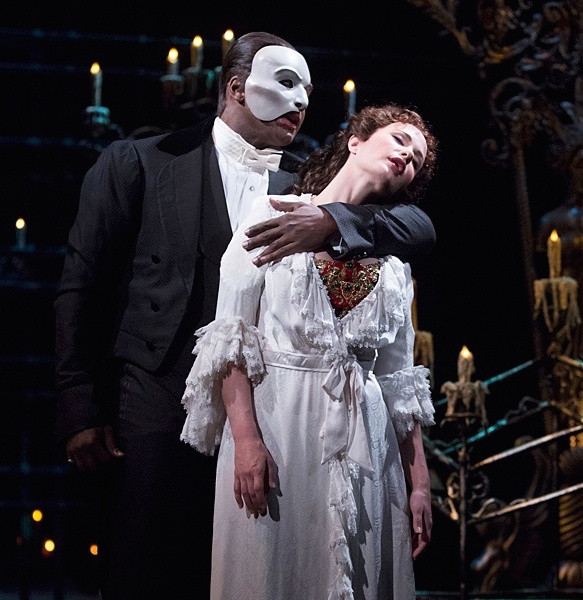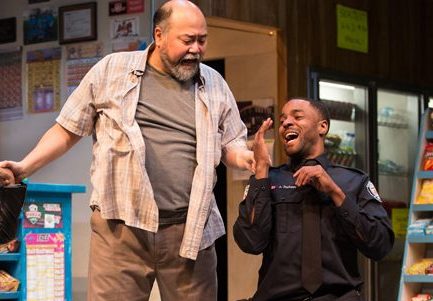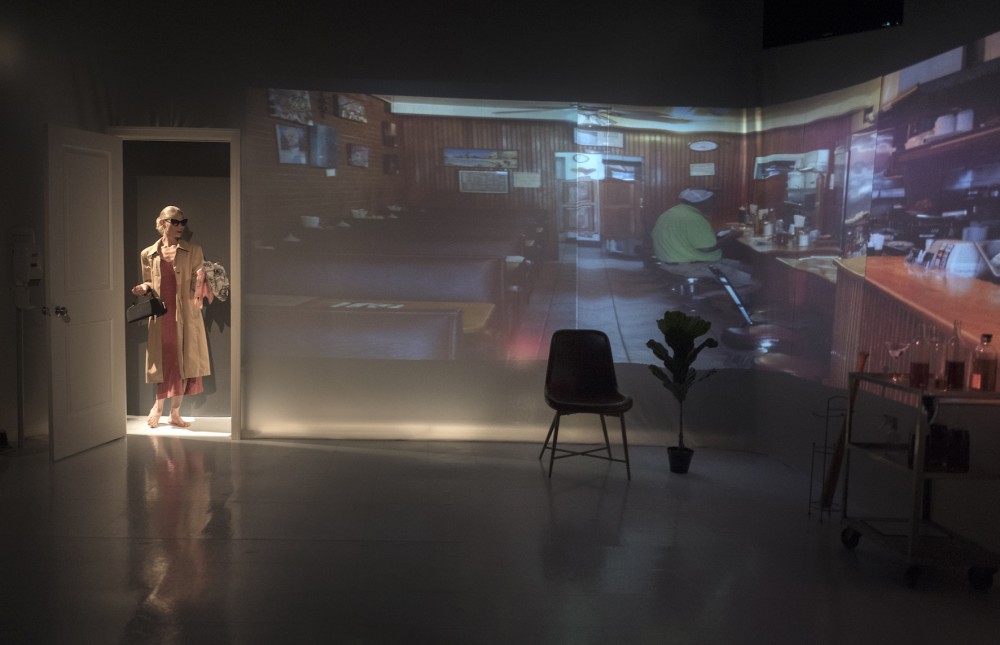
by JK Clarke
One doesn’t expect an off-off-Broadway, independent theater solo show to be a high tech affair, so the video, lighting and sound of Hope—playing through October 13 at The Wild Project in the East Village—comes as a rather extravagant surprise. Performed by Hope Salas, and aptly directed by Erika Latta, Hope is a semi-autobiographical, one-woman show about the life she experienced as a result of being raised by loving parents, despite her mother’s own horrifically dysfunctional upbringing.
At the show’s open, Hope (Hope Salas, who also wrote the piece), is describing her mother’s imminent death in 2007. Because her mother is a very large woman it’s an awkward affair, “But my mother was no ordinary duck . . . [she] probably weighed close to 500 pounds.” Eight emergency services workers are gathered around her bed, trying to figure out how to get her out and transported to the hospital. Though Hope’s mother, Alice (whom she portrays later), called for the ambulance herself, she’s convinced she will be out of the hospital in a few days. But that’s not the case. Hope is left caring for her father and remembering her mother’s difficult life, which ended up impacting her own, often adversely.
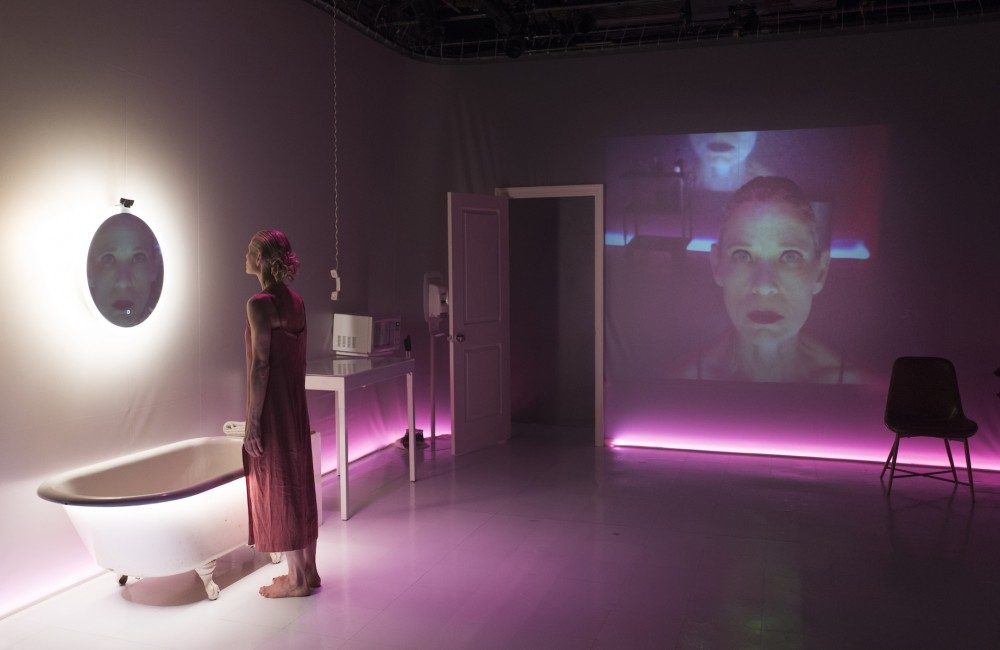
Later in the play she flashes back to her mother Alice’s childhood in the 1950s. Alice worked at diner and had a friend named Rose, a prostitute who took her in and looked after her when her sexually abusive father physically assaulted her one day in the cafe. Alice’s eventual problems with obesity is somewhat explained by this backstory. Salas plays these scenes beautifully by stepping out an upstage door and sliding gracefully into costumes within view of the audience, then moving back onto the set onto which a “live” action video of the counter of a diner is projected and with which she interacts.
In recounting her story, Salas interacts with various objects on Marsha Ginsberg’s functional and often amusing set, featuring a “magic,” apparently backless microwave into which items disappear or appear, beyond the scope of its presumed capacity. Some furnishings, like her bathroom mirror, are embedded with video cameras (or just seem to be), allowing her image (somehow not always exactly in sync with her movements) to be projected elsewhere on the set. We become her mirror, seeing head-on her intense, questioning gaze. And overhead cameras are used to project a downward image of Hope cradled in a bathtub or laying on her back on a flat, hard table. The effect is mesmerizing, as the story takes on new dimension and intensity from the video (Gil Sperling), lighting (Yuki Nakase), sound/music design (Yiannis Christofides) which combine professionally to create a masterful visual accompaniment to Salas’s storytelling.
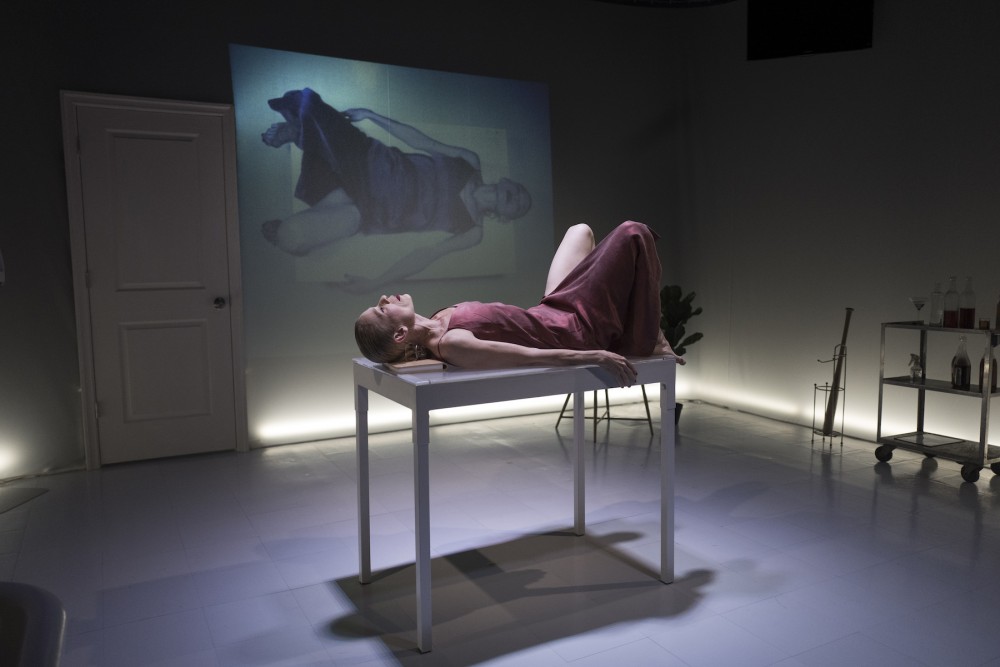
Salas herself takes an intense, heart-wrenching story and infuses it with intrigue with an intense physical performance. Her background as a dancer is evident in her remarkably muscular arms which at times glide smoothly across her body or perform rigid, modern dance-influenced gestures at others. Where most solo shows only scarcely employ props and technology, Hope uses them to maximum effect, making for a fascinating and beautifully enhanced production.
Hope. Though October 13 at The Wild Project (195 East 3rd Street, between Avenues A & B). www.thewildproject.com or www.hopesalas.com
Photos: Pascal Perich


